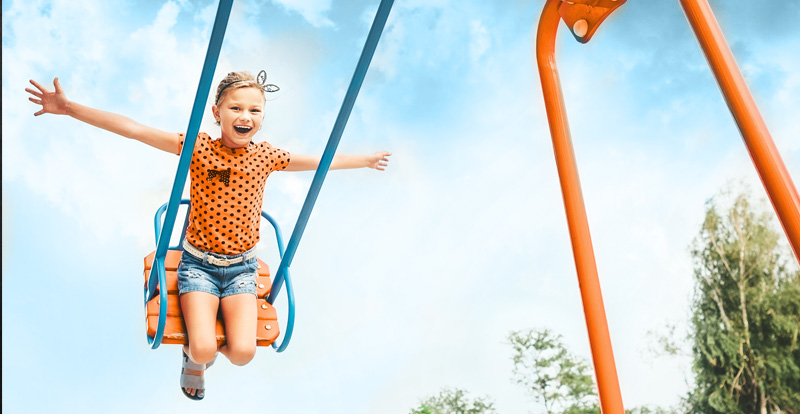Proactively Plan for Playground Safety

Playgrounds provide a great space for children all across the country every day; help prevent problems with playground safety measures in place.
Playgrounds are a great place to build community and to help keep children active. Playgrounds and playground equipment provide educational and pleasurable experiences to millions of children every day.
While playgrounds are generally safe, they can also present significant injury hazards. Accidental injuries can occur due to falls, hangings, entrapments, strikes by moving parts or sharp points. Each year, too many children are injured while using playground equipment.
Analysis of what causes playground-related injuries has helped us understand how best to avoid these accidents. Follow these guidelines to set your playground up for success.
Location, location, location
Separate the playground from streets, parking lots and other areas with fencing. Ensure that the equipment location and spacing allows for the even distribution of children throughout the playground area.
According to the U.S. Consumer Product Safety Commission, when placing swing sets and installing multiple swing units, 30 inches should separate the swing chain from the nearest support, and 24 inches should separate swing units.
Create soft landings
Do not install the playground on paved surfaces, grass or dirt. Shock absorbent surfacing material should be used under and in fall zone areas around all playground equipment.
Here’s a great list of recommended materials:
- Organic Loose-fill Materials: pine bark nuggets, pine bark mulch, shredded hardwood bark.
- Inorganic Loose-fill Materials: pea gravel, crushed stone.
- Unitary Materials: uniform rubber mats, interlocking rubber mats.
- Loose-fill Manufactured Materials: chipped rubber.
Get rid of tripping triggers
Review the playground and surrounding area for things like rocks, tree roots, depressions to ensure they will not cause problems when considering likely play habits of visiting kids.
Also, remove cable ropes, wires and other obstructions between pieces of equipment.
Ensure things stay put
Install concrete footings for playground equipment at least four inches below grade. Also, install slip resistant surfaces on all climbing equipment, gripping and step components.
Inspection and maintenance of equipment is vital to ensuring it is safe
Equipment associated with frequent injuries should be repaired to correct problems and help prevent more injuries. If corrective measures are not possible, the equipment should be removed.
Inspect the equipment and the area daily, and repair problems promptly. When conducting inspections, eliminate and repair the following specific conditions:
- Equipment components that are bent, cracked, rusted or warped
- Open or deformed “S” hooks, links, rungs and shackles
- Worn swing seats and chains
- Damaged, loose or missing swing seats
- Broken or damaged anchors and supports
- Damaged-exposed concrete anchors, which must be at least four inches below grade
- Accessible sharp edges, bolts, fasteners and protrusions
- Uncapped, exposed tube endings
- Cracked or splintered wood
- Worn bearings
- Broken or missing rails, rungs, seats and steps
- Loose nuts and bolts
- Areas of poor drainage
These steps are important to help create a safe playground environment, but won’t reduce your risk to zero. Also consider which types of insurance coverage are important to ensuring the highest protection.

